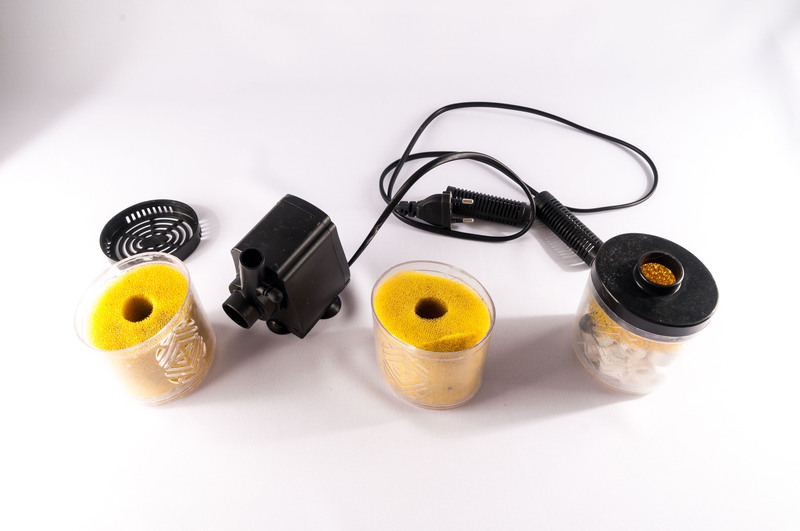Care for Your Recliner: Expert Methods for Long-Term Safeguarding
Posted on 17/05/2025

Care for Your Recliner: Expert Methods for Long-Term Safeguarding
Your recliner is more than just a piece of furniture--it's your comfort zone, reading nook, and a relaxing haven after a long day. Ensuring its longevity requires more than occasional cleaning; it demands consistent care, preventive strategies, and expert maintenance. Discover the top expert techniques to safeguard your recliner for years, whether it's fabric, leather, or a hybrid model.
- Why Recliner Care Matters
- Routine Cleaning and Maintenance Strategies
- Deep Cleaning Tips for Different Materials
- Protecting Your Recliner from Everyday Damage
- Expert Preventative Methods for Longevity
- Troubleshooting and Fixing Common Recliner Issues
- FAQs About Caring for Recliners
- Enhancing the Life of Your Recliner: Final Tips
Why Recliner Care Matters
Investing in a quality recliner isn't just about comfort; it's about preserving that comfort for the long run. Without proper care, even premium recliners can suffer from fabric fading, squeaky mechanisms, uneven padding, and unsightly stains. With every spill or unnoticed scratch, the chair's structural and aesthetic value diminishes. Consistent recliner maintenance ensures the cushioning, fabric, and reclining functions continue to operate smoothly, granting you many years of relaxation.
Benefits of Long-Term Recliner Care
- Preserves appearance and prevents early wear and tear.
- Retains comfort--padding and support stay resilient.
- Protects investment, potentially increasing resale value.
- Prevents mechanical issues with moving parts and recliner frames.
- Presents a hygienic, inviting home environment.
Routine Cleaning and Maintenance Strategies
Establishing a consistent cleaning schedule is the backbone of effective recliner care. Each material demands specific attention, and recognizing these nuances is crucial to avoid accidental damage.
Weekly Quick-Clean Checklist
- Dust regularly: Use a microfiber cloth or handheld vacuum on all accessible surfaces, including cushions, arms, and crevices.
- Check for crumbs and debris: Recliners accumulate debris in hard-to-reach nooks; use a crevice tool to dislodge them.
- Wipe exposed framework: Gently clean metal or wooden areas with appropriate wood or metal cleaner.
Monthly Maintenance Routine
- Spot treat spills: Use a fabric-appropriate cleaner immediately on accidental stains to prevent them from setting.
- Rotate cushions: Flipping or rotating cushions helps maintain even wear and cushioning.
- Tighten hardware: Check and tighten screws, nuts, and bolts to stop unnecessary squeaking or looseness.
- Lubricate moving mechanisms: Spray appropriate lubricant (like silicone spray) on joints and moving parts to keep the reclining action smooth.
Establishing a schedule ensures that recliner care becomes a seamless part of your everyday cleaning regime, helping your favorite chair remain functional and fresh.
Deep Cleaning Tips for Different Materials
Different recliners require tailored cleaning procedures--fabric, leather, and synthetic upholstery all benefit from specialized methods:
Fabric Upholstery Recliner Care
- Vacuum thoroughly using an upholstery attachment. Pay special attention to seams and folds where dust and dirt gather.
- Spot clean stains with mild, upholstery-safe cleaners. Always test on inconspicuous areas first.
- Steam clean bi-annually if your recliner's fabric permits. This removes deep-seated dirt, mites, and allergens.
Leather Recliner Maintenance
- Dust and wipe down routinely with a soft, dry cloth.
- Use leather conditioner every three months to prevent drying and cracking. Apply with gentle, circular motions.
- Avoid strong chemical cleaners; opt for pH-balanced leather products instead.
- Keep away from heat sources and direct sunlight, as these can fade and deteriorate the leather.
Synthetic and Faux Leather Recliner Care
- Clean with a damp microfiber cloth: Avoid soaking, as water may damage the backing.
- Use mild soap solutions--never harsh chemicals.
- Polish with a synthetic upholstery protector to ward off stains and scratches.
Protecting Your Recliner from Everyday Damage
Prevention is always better than cure. Guarding your recliner's finish and frame against daily hazards can add years to its lifespan.
Key Everyday Threats to Recliners
- Direct Sunlight: Causes fading, particularly on both fabric and leather surfaces.
- Pets: Claws can snag and damage upholstery; drool and fur contribute to stubborn stains.
- Food and Drink Spills: With every snack comes the risk of grease and liquid stains.
- Heat and Moisture: Humid rooms or proximity to heaters can warp wooden frames and weaken adhesives.
Practical Safeguarding Solutions
- Use slipcovers or throws: These offer a stylish and removable layer of protection, especially useful for homes with children or pets.
- Position away from hazards: Place recliners away from direct sun, fireplaces, or radiators.
- Set house rules: Consider "no eating or drinking" guidelines to minimize stain risks.
- Clip pet nails regularly and provide alternate scratching pads.
- Invest in professional upholstery protection treatments: These are often water and stain-repellent, perfect for brand-new chairs.
Expert Preventative Methods for Recliner Longevity
Beyond routine cleaning, professional upholstery technicians and furniture experts recommend several best practices for maximizing the useful life of your recliner:
1. Schedule Annual Professional Cleaning
Professional deep-cleaning services use specialized equipment to remove ground-in dirt and revive both fabric and leather recliners. This is especially important for high-traffic households or vintage chairs.
2. Address Spills Instantly
Blot, don't rub, spills with a clean towel or sponge. For protein-based stains (milk, blood), use cold water; for oil-based spots, use a dry cleaning solvent suited for your material. Always follow the manufacturer's guide.
3. Maintain Reclining Mechanism
- Tighten bolts and screws every six months.
- Lubricate metal tracks with a non-greasy spray lubricant.
- Test reclining motion frequently--if you experience resistance or sticking, investigate immediately to prevent further issues.
4. Use the Right Cleaning Products
Never use generic all-purpose cleaners unless they're marked safe for your upholstery type. Keep dedicated supplies for leather (non-alkaline cleaner, conditioner, soft cloths) and for fabric (mild soap, distilled water, stain removers).
5. Monitor Weight Limits
Every recliner is rated for a maximum weight capacity. Repeated overloading can deform the padding, break reclining mechanisms, and void warranties.
Troubleshooting and Fixing Common Recliner Issues
No matter how meticulous you are, problems can arise. Quick identification and action are crucial to safeguard the structure of your recliner:
- Squeaky Noise: Usually caused by loose or dry mechanical parts. Inspect, tighten, and lubricate.
- Stiff Reclining Action: Obstruction or debris in the mechanism--vacuum and lubricate.
- Sagging Cushions: Rotate or add new padding inserts. Some cushions are easily replaced or fluffed.
- Upholstery Tears: Small snags can be fixed with upholstery thread and needle or fabric glue. For larger damages, consult a reupholstery specialist.
- Stain Setting: If a stain won't budge, avoid aggressive scrubbing. Blot gently and, if needed, call a professional cleaner.
FAQs About Caring for Recliners
How often should I clean my recliner to ensure long-term safeguarding?
Weekly dusting and vacuuming paired with monthly in-depth inspections are ideal. For best results, conduct a comprehensive cleaning every three to six months depending on usage and material.
Are commercial fabric protectors worth it?
Yes--fabric protectors and sprays can create a barrier against new spills and stains. Only use products endorsed by your recliner's manufacturer and do a test patch first.
Can I use water to clean leather recliners?
Plain water can be harsh on leather, potentially causing dryness or cracking. Instead, use a damp cloth lightly and finish with a leather conditioner to restore suppleness.
What's the right way to fix mechanical problems at home?
Always check your warranty first. Simple fixes like tightening screws or lubricating joints are safe, but never tamper with the main mechanism if it's covered--call a pro.
How do I keep my recliner from unpleasant odors?
Fabric recliners benefit from baking soda deodorizing and sunlight exposure (avoid UV for leather). For lingering odors, consult with a professional upholstery cleaner.
Enhancing the Life of Your Recliner: Final Tips
A little attention goes a long way. Consistent, careful recliner maintenance means you can enjoy your favorite seat for years--free of stains, squeaks, and sags!
- Read your recliner's manual and follow manufacturer-specific recommendations.
- Keep cleaning supplies close so you can react instantly to spills and debris.
- Rotate and fluff cushions regularly to maintain plumpness and comfort.
- Avoid overloaded or rough use, especially reclining too forcibly.
- Schedule professional assessments once a year for peace of mind.
Remember: your recliner is an investment in comfort, and a few preventive measures now can assure years of enjoyment. Treat it with regular care, stay alert for signs of wear, and always act fast to address issues--your recliner (and your back) will thank you.
Take action today: Use these expert recliner care methods and keep your favorite seat looking and feeling its best for the long-term!










